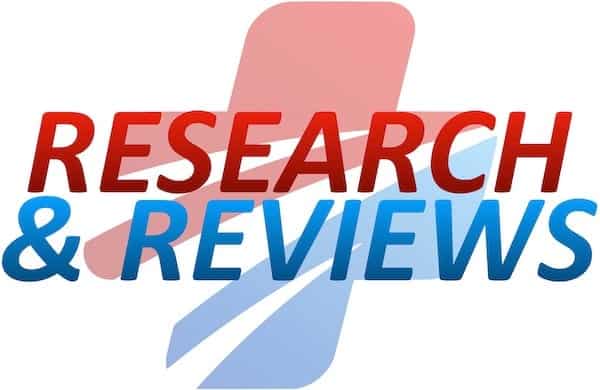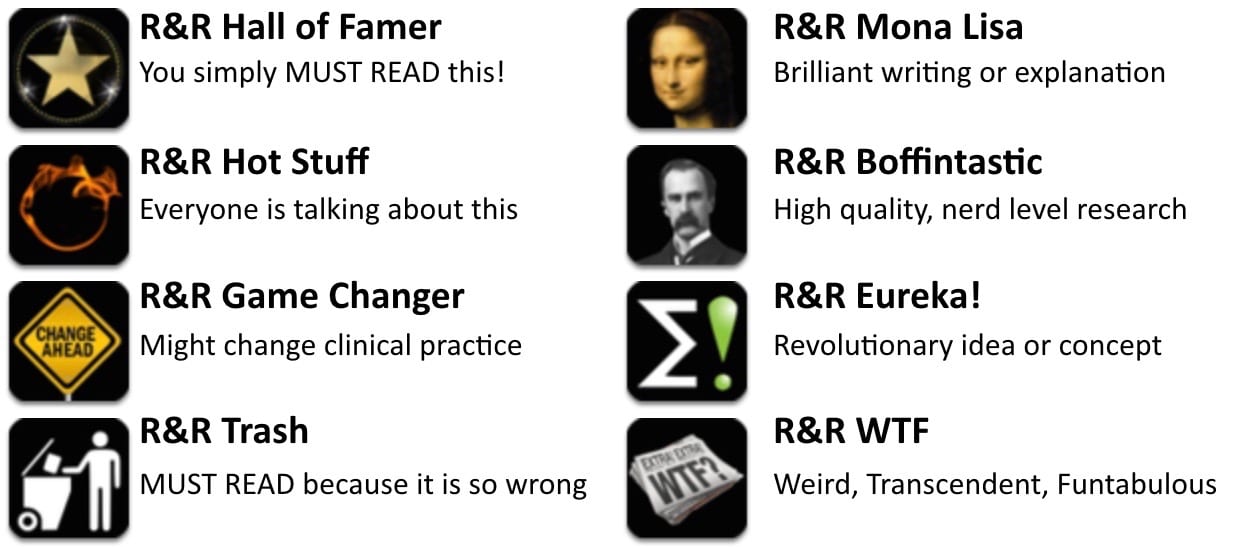R&R In The FASTLANE 138
Welcome to the 138th edition of Research and Reviews in the Fastlane. R&R in the Fastlane is a free resource that harnesses the power of social media to allow some of the best and brightest emergency medicine and critical care clinicians from all over the world tell us what they think is worth reading from the published literature.
This edition contains 6 recommended reads. The R&R Editorial Team includes Jeremy Fried, Nudrat Rashid, Soren Rudolph, Anand Swaminathan and, of course, Chris Nickson. Find more R&R in the Fastlane reviews in the : Overview; Archives and Contributors
This Edition’s R&R Hall of Famer
Diercks DB, et al. Clinical Policy: Critical Issues in the Evaluation and Management of Adult Patients With Suspected Acute Nontraumatic Thoracic Aortic Dissection. Annals of Emergency Medicine 2015. PMID 25529153
- This is the current clinical policy about management or thoracic aortic dissection (TAD). The group did a solid appraisal of the literature and make some (conservative) recommendations:
- Do not use CDR to rule-out or identify low risk patients for TAD
- Do not use D-dimer to rule-out or identify low risk patients for TAD
- CTA is the test of choice, similar performance to MRI and TTE
- Do not make the diagnosis of TAD based on bedside EUS TTE
- Treat tachycardia and hypertension, but goals are not clear
- Recommended by Daniel Cabrera
Ogura T, et al. Nonoperative management of hemodynamically unstable abdominal trauma patients with angioembolization and resuscitative endovascular balloon occlusion of the aorta. Journal of Trauma and Acute Care Surgery. 2015. PMID 25539214
- REBOA was a hot topic during 2014 after several reports of its use in the pre-hospital setting; this is one of the first papers exploring its use in the ED/Trauma bay. Japanese pilot study where 7 unstable abdominal trauma patients were place in REBOA and taken to emergency embolization/angiography; the mortality was 14%. There were no complications from the procedures. This is a very small study that explores about the feasibility of the approach, but the observed benefit compares favorably with historical mortality of blunt abdominal trauma requiring exp lap, which is 40-50%.
- Recommended by Daniel Cabrera
St John PD, et al. Utility of Hippocrates’ prognostic aphorism to predict death in the modern era: prospective cohort study. BMJ 2014. PMID 25512328
- Ah, the Christmas issue of the BMJ. Always chock full of fun articles.This study seeks to prove a saying attributed to Hippocrates: “It augurs well, if the patient’s mind is sound, and he accepts food that’s offered him; but, if the contrary conditions do prevail, the changes of recovery are slim.” In a nutshell, Hippocrates felt that a good appetite and good cognition bode well for mortality. The author’s found that in a group of community living older adults, a graded effect was present. The more severe appetite loss or poor cognition, the more likely the patient would have a poor prognosis.
- Recommended by Anand Swaminathan
Norskov AK, et al. Diagnostic accuracy of anaesthesiologists’ prediction of difficult airway management in daily clinical practice: a cohort study of 188 064 patients registered in the Danish Anaesthesia Database. Anaesthesia 2014. PMID 25511370
- It is standard care in Emergency Medicine, Anesthesia and Critical Care to assess patients for difficulty of intubation and mask ventilation prior to beginning the procedure. However, this data shows that our standard techniques for doing this assessment are sub-optimal. In this large prospective database of anesthesiologist performed intubations, sensitivity for deciding an airway was challenging was extremely poor. What does this mean? We should approach airways as potentially challenging and prepare accordingly.
- Recommended by Anand Swaminathan
Yilmaz M, et al. Meteorological Parameters and Migraine Headache: Emergency Department Study. Am J Emerg Med 2015. PMID 25601162
- At least in Turkey, migraines are related to the weather. This is an observational study comparing presentation to the ED with migraine and weather conditions. A total of 3491 patients were analyzed comparing time of presentation versus temperature, humidity and moon phases. There was a direct relation (p<0.005) with the highest temperature of the day and a negative relation with the highest humidity (p<0.031). No relation with moon phases. Patient with migraines seems to present to Turkish EDs on hot and dry days.
- Recommended by Daniel Cabrera
Boyce N. Strangers when we meet: David Bowie, mortality, and metamorphosis. Lancet 2016. PMID 26867436
- The ultimate fate of Major Tom
– fascinating editorial putting the work and life of David Bowie into a medical perspective. - Recommended by Soren Rudolph
Senior Consultant Anesthesiologist, Traumemanager and PHEM doctor. Dedicated to trauma resuscitation, prehospital care and airway management. Barometerbarn | @SorenRudolph |








